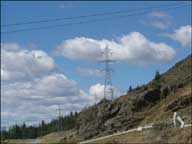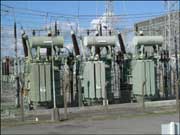11. The National Grid
1. An Alternating Current system
Alternating Current (or AC) is the type of electricity where
- electrons move back and forth along a wire
- a single electron does not travel far
- the movement occurs 50 times a second (50 Hertz, 50Hz).
Alternating Current is sent at a high voltage and a low current, so that the heat loss from the wires is reduced. Transformers are an easy way to raise or lower the Voltage.
The electricity leaves the Wairakei Power Station at 220 000 Volts and then it
- joins the National Grid
- is transformed down to 110 KV, 66 KV, 50 KV, 33 KV or 11 KV near towns and cities
- is transformed down to 230 V AC near houses
- travels through electrical appliances and equipment
- travels back to the Wairakei Power Station.
2. The Direct Current System
Direct Current (or DC) is where the electrons
- move in one direction along a wire
- are thought to be going to be travelling from positive (red) to negative (black).
Direct Current is only used in the 575km DC cable from Benmore, Otago to Haywards, Wellington. This cable joins the power supplies of the North and South Islands. Ninety five percent of the time the current flows North.
When built in 1965, this was the world’s largest and longest DC cable, with the world’s largest submarine cable. The success of this feat has earned it a Millennium award from the Institute of Professional Engineers of NZ.



